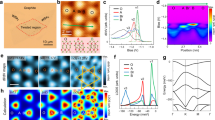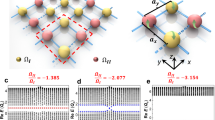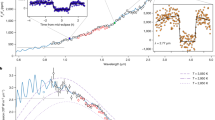Abstract
THE spectrum of this comet was examined here on the evening of October 7 with a spectroscope having a single prism of 45°, and was found to consist of three bright bands and a continuous spectrum corresponding to the nucleus. The middle and brightest band was compared with the band at W.L. 5198 in the spectrum of a vacuum tube containing alcohol vapour, and three micrometer measures gave the position of the less refrangible edge of the comet band at W.L. 5184, 5215, and 5204 tenth metres respectively. The breadth, of the band was about 40 tenth metres. These measures would indicate that the principal comet-band is coincident with tie band at W.L. 5198 of the vacuum-tube spectrum of carbon-compounds, and not with that of the Bunsen-flame at W.L. 5165. The observations however were made under unfavourable circumstances, the comet being low, and involved in haze and cloud. The positions of the other two bands were not determined.
This is a preview of subscription content, access via your institution
Access options
Subscribe to this journal
Receive 51 print issues and online access
$199.00 per year
only $3.90 per issue
Buy this article
- Purchase on SpringerLink
- Instant access to full article PDF
Prices may be subject to local taxes which are calculated during checkout
Similar content being viewed by others
Author information
Authors and Affiliations
Rights and permissions
About this article
Cite this article
CHRISTIE, W. The Spectrum of Hartwig's Comet. Nature 22, 557 (1880). https://doi.org/10.1038/022557d0
Issue date:
DOI: https://doi.org/10.1038/022557d0



